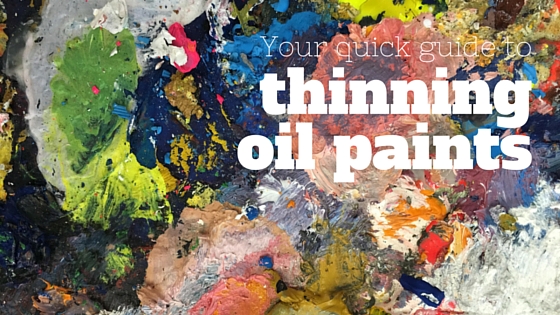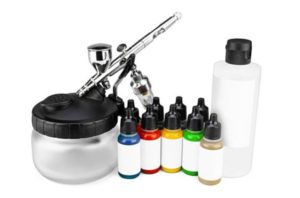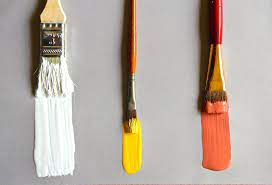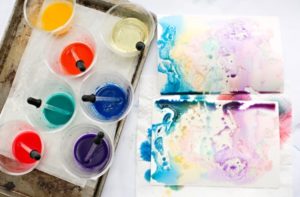
Best Tips and Techniques for Perfecting the Art of Oil Paint Thinness
Introduction
Due to the extraordinary versatility and vibrant, long-lasting colors, oil painting is a preferred medium for artists all over the world. However, handling oil paint can be difficult, particularly for beginners. Effective oil paint thinning is a crucial skill that every oil painter should learn. Oil paint can be thinned to achieve intricate details and transparent glazes, among other things. We’ll delve into the methods, equipment, and advice in this blog to help you master the skill of oil paint thinning.
Understanding the characteristics of oil paints is vital before we get into the techniques for thinning them. The process of making oil paint involves suspending pigments in a drying oil medium, usually linseed oil. The consistency of paint straight out of the tube is typically thick, so it must be thinned for tasks like layering, blending, mixing, and transparency.
Why is it necessary to thin oil paint?
Oil paint can be thinned for a variety of reasons:
Transparency: When the paint is thinned, it becomes more transparent, enabling you to make luminous glazes and seamless color transitions.
Layering: You can work on details and add depth by gradually adding thin layers of paint.
Blending: Thinner paint is simpler to blend, making it easier to create subtle color transitions and gradients.
Drying Time: Thinned paint dries faster, which is helpful for some styles of painting and when you need to make adjustments.
It enables you to alter the paint’s consistency for various applications, including impasto and detailed work.
Related Article : Difference between Acrylic Paints And Oil Paints
What do you need for thinning oil paint?
You’ll need a few necessary tools and supplies to thin oil paint effectively:
Solvents: The solvents, such as mineral spirits or turpentine, are frequently used to thin oil paint. Although turpentine is typically used, odorless mineral spirits are a less harmful substitute. Use them in a well-ventilated space. Avoid over-thinning the paint as this can compromise the adhesion and durability of your work.
Linseed Oil: You can add linseed oil to your paint to make it more transparent and fluid. Additionally, it shortens the drying period, which is advantageous in some circumstances. To prevent fading over time, it is crucial to use refined linseed oil. Start with small quantity and gradually increase the quantity of linseed oil as needed.
Painting Mediums: Several media are available that are intended specifically for thinning oil paint and modifying its characteristics. These include cold wax medium, alkyd mediums, and stand oils.
Techniques
- Scumbling: is the process of painting over a dry layer of paint with a thin coat of opaque or semi-opaque paint. This method adds texture or produces atmospheric effects by producing a hazy or soft-focus effect.
- Blending: When blending colors, use a mixture of thin, thoroughly mixed paint and soft paint brushes. Blending brushes are crucial tools for achieving seamless color changes.
- Layering: Apply thin coats of paint over dry layers to create subtle effects, particularly in glazing. Although this technique requires patience, it can give your artwork lovely depth and luminosity.
Related Article : What Research Says About Oil Paint
Tips for thinning oil paint effectively
- Don’t be afraid to try out various thinning techniques, equipment, and materials to see what suits your preferences and goals the best.
- Maintain Balance: Don’t overly thin your paint because this can cause weak bonding and tearing over time. The secret lies in the balance.
- To prevent color damage and maintain the purity of your colors, thoroughly clean your brushes when switching between colors and thinning techniques.
- Use solvents in a well-ventilated area always and take all necessary safety measures to protect both you and other people.
NOTE: Some techniques or applications for instance layering and glazing requires patience. So be patient when trying new techniques.
Related Article : Difference Between Acrylic Paint And Gouache Paint
Prioritize safety when thinning oil paint by taking these safeguards:
- Work in an area that is properly ventilated to disperse fumes.
- Wear gloves and a respirator with organic vapor cartridges as protective equipment to avoid coming into contact with your skin and breathing in dangerous fumes.
- No Open Flames: Because some solvents are flammable, stay away from open flames and sparks.
- Safe Disposal: Comply with local laws when getting rid of used paint rags and solvents.
- You can thin oil paint while protecting your health and maintaining a secure environment by following these guidelines.
Final words
An essential skill for any oil painter is the ability to thin paint. It offers a myriad of options for achieving transparent glazes, gentle blends, and intricate details in your artwork. so master the art of thinning oil paint and advance your skilss of oil painting by knowing about the characteristics of oil paint, using the right equipment and methods, and practicing. Thus, don’t be afraid to try new things and pick up new skills. You’ll be in awe of the incredible outcomes of method can help you get. Enjoy your painting with our guide.






